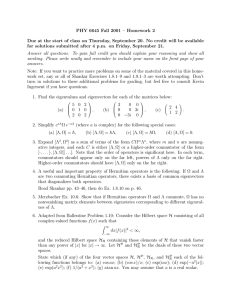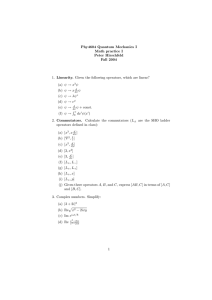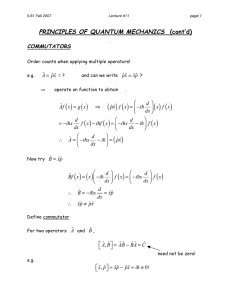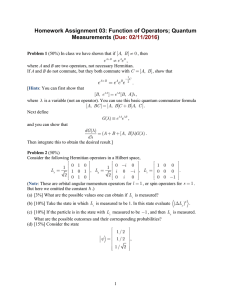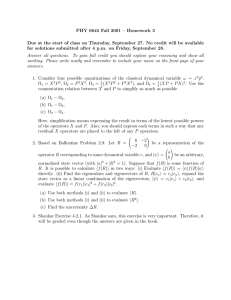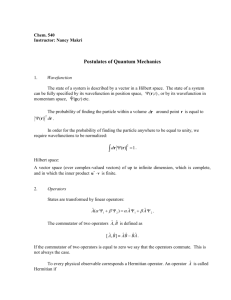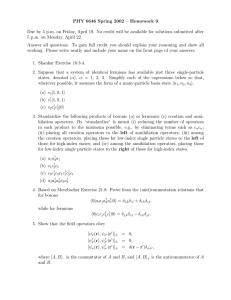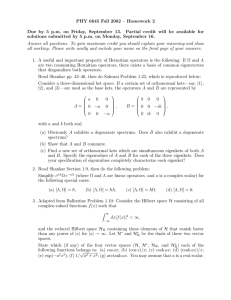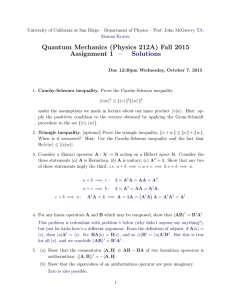PHY4604–Introduction to Quantum Mechanics Fall 2004 Problem Set 7 Oct. 18, 2004
advertisement
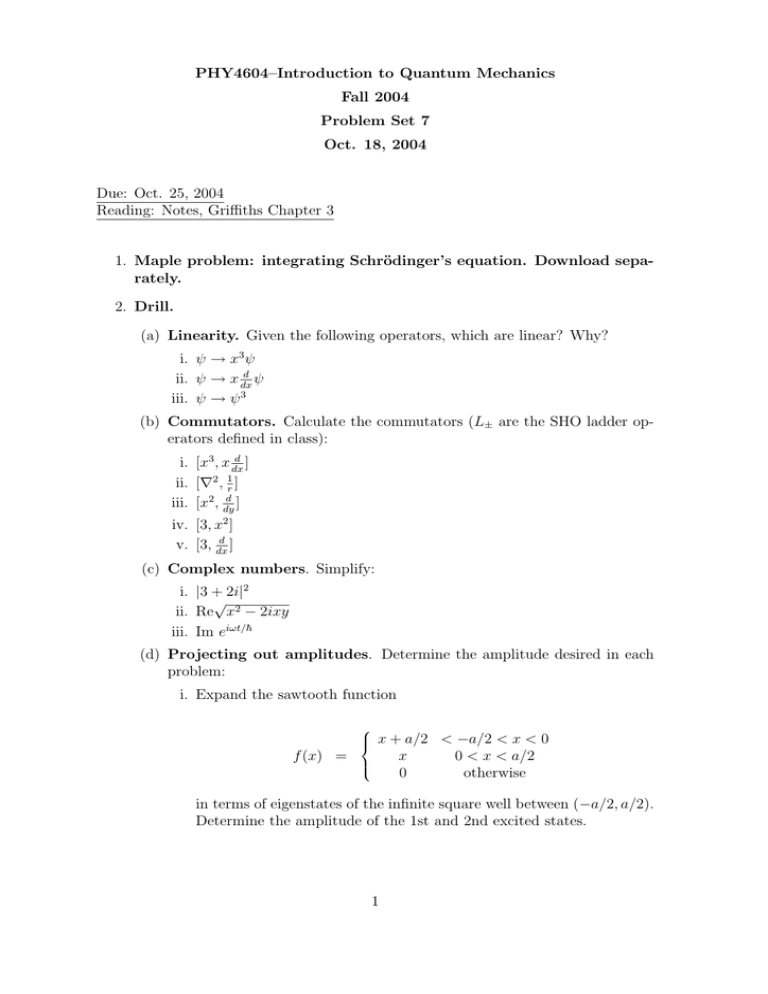
PHY4604–Introduction to Quantum Mechanics Fall 2004 Problem Set 7 Oct. 18, 2004 Due: Oct. 25, 2004 Reading: Notes, Griffiths Chapter 3 1. Maple problem: integrating Schrödinger’s equation. Download separately. 2. Drill. (a) Linearity. Given the following operators, which are linear? Why? i. ψ → x3 ψ d ii. ψ → x dx ψ 3 iii. ψ → ψ (b) Commutators. Calculate the commutators (L± are the SHO ladder operators defined in class): d i. [x3 , x dx ] ii. [∇2 , 1r ] d iii. [x2 , dy ] iv. [3, x2 ] d ] v. [3, dx (c) Complex numbers. Simplify: i. |3 + 2i|2 √ ii. Re x2 − 2ixy iii. Im eiωt/h̄ (d) Projecting out amplitudes. Determine the amplitude desired in each problem: i. Expand the sawtooth function f (x) = x + a/2 x 0 < −a/2 < x < 0 0 < x < a/2 otherwise in terms of eigenstates of the infinite square well between (−a/2, a/2). Determine the amplitude of the 1st and 2nd excited states. 1 (e) Delta functions. Evaluate: i. ii. R3 −3 R3 −3 1 2 dx δ(x − 2) exp− 2 x 1 2 dx δ(x − 4) exp− 2 x (f) Hermitian operators. Let x and p be the usual operators for position and momentum. State whether each of the following operators is selfadjoint (Hermitian), anti-self-adjoint (antiHermitian, O† = −O), unitary (O† O = 1), or if none of the above, what the adjoint is. Hint: remember (AB)† = B † A† . i. xxp ii. xpx iii. xpp + ppx d2 iv. dx 2 (g) More operators. Two operators A and B satisfy A = B † B + 3 and A = BB † + 1. i. ii. iii. iv. show A is self-adjoint find [B † , B] find [A, B] Suppose ψ is an eigenfunction of A with eigenvalue α. Show that if Bψ 6= 0, then Bψ is an eigenfunction of A, and find the eigenvalue. 2
